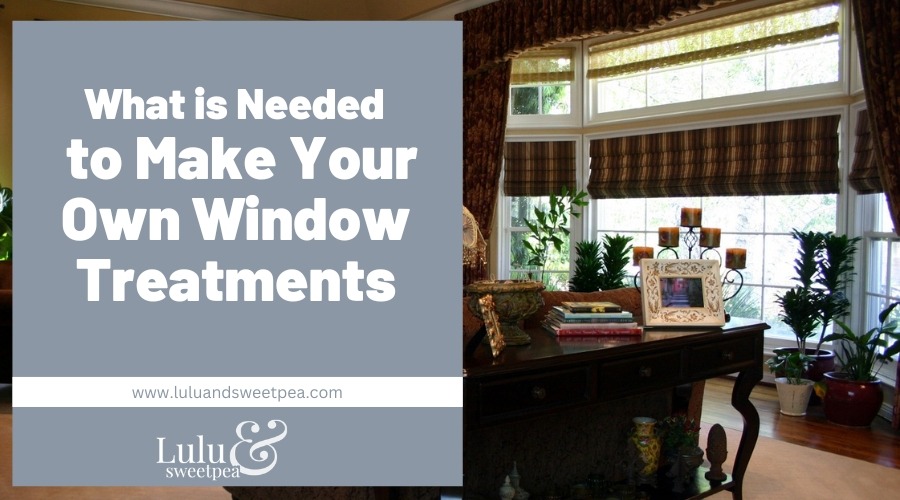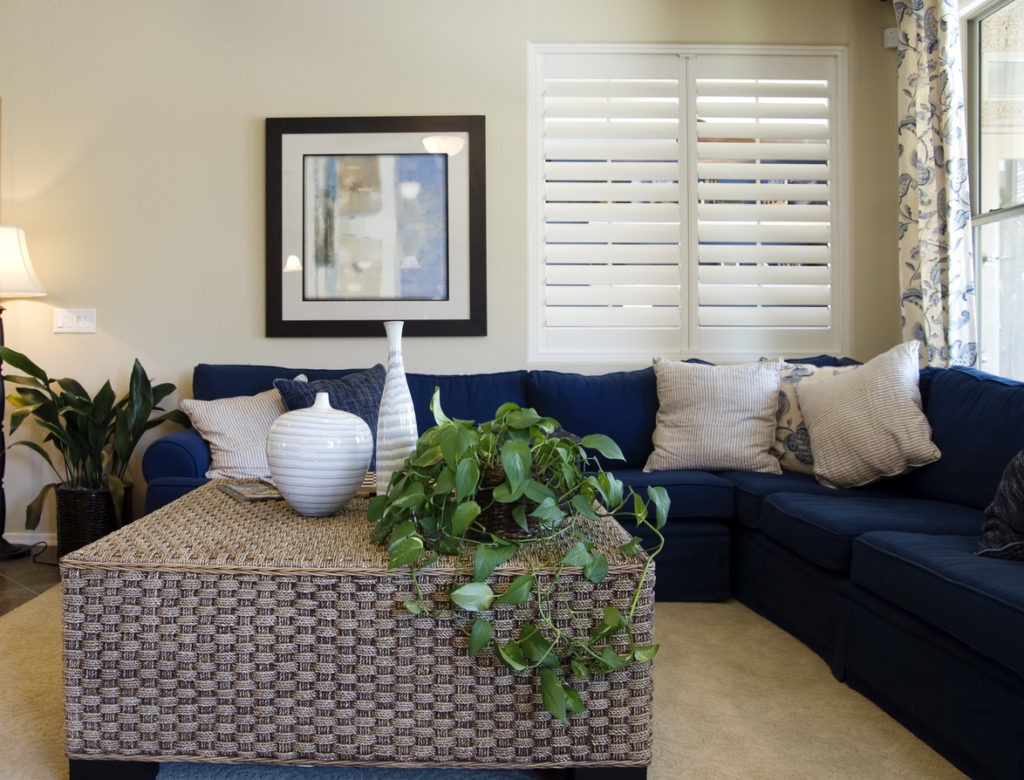Make your window covering easy to inject personality and style into any space. Even if you’ve never sewn before, you should be able to do this project easily and enjoyably. While the aesthetic value of window coverings cannot be overstated, it is important not to overlook their practical applications; for example, privacy curtains let in light but keep the eyes of passers-by out. While blackout shades allow you to sleep quietly even after daybreak, a range of adjustable shades allows you to regulate light as the sun travels lower in the sky in the afternoon.
Types of Window Treatments
A window treatment is a cosmetic alteration to an existing window, typically in the shape of a cover, that enhances the aesthetics of the window and the surrounding space. Hard treatments are more permanent than soft ones, but both have advantages and disadvantages.
1. Hard Window Treatments – Hard window treatments are constructed from sturdy materials. Because of its versatility and convenience, many people choose to have their windows covered with prefabricated, hard window coverings installed by a professional. Though some hard treatments are made from softer materials like paper or linen, most are crafted from more robust materials like wood or vinyl. Hard window coverings can give any room a modern, uncluttered look and feel. Types of permanent window coverings include:
- Window Shutters – Wooden or synthetic polyresin panels are used to create shutters for windows. A hinge attaches it to the window casing. They can be fixed in place or of the tilting variety that can only be tilted rather than raised or lowered. Nonetheless, the light entering the room may be adjusted by opening and closing the slats.
- Blinds – Louvers in window blinds are what allow light into the room. The blinds don’t need to be raised to access it. Blinds come in various materials, including aluminum, wood, and imitation wood varieties. Nowadays, you may even find blinds that have built-in anti-dust characteristics. Venetian blinds, pleated blinds, and vertical blinds are all types of blinds based on different designs.
- Window Shades – Shades for windows are pieces of fabric that cover the glass. When you pull back the shades, they neatly fold into a compact unit. Woven wood shades, cellular shades, roman shades, roller shades, etc., are just a few examples of the wide varieties of window coverings available.
2. Soft Window Treatment – Soft window treatments, which can be produced from a wider variety of materials, add a lot of creative flexibility to a room. Treatments can be made from various fabrics and textiles, allowing homeowners to express their style.
Drapes, curtains, valances, swags, and cascades are a few examples of soft window treatments that can spruce up your home. Soft window treatments are the most common method for covering windows, which make a room look more put together.
- Curtains and Drapes – Curtains can cover the entire window or reach the ground. Window coverings can be identified by either the word “curtain” or “drapery,” though the latter is more commonly used. Curtains can be shorter than the window or drapes. Café curtains, for instance, are often hung about halfway down from the top of the window. Drapes and curtains can either be left hanging or drawn over a rod to create a closed space.
- Valances – Different shaped and styled valances are used to cover the tops of windows for decorative purposes. Even though valances can be used as a standalone piece of decor, they are often used by homeowners to conceal the hardware and frames of other window coverings. Some valances are hard window decorations with wood components connected to the wall, whereas the vast majority are soft treatments consisting of pleated, gathered, or draped cloth. Most hard valances are horizontal across the top of the window, though their lower edges can be cut if desired. A valance, regardless of style, may instantly elevate a room’s aesthetic while keeping it within budget.
- Drapes, cascades, and swags – Enhance your windows’ aesthetic value by installing swags and cascades. They’re mainly for show and always coupled to create a lively impression. Cascades, also known as jabots or tails, cascade down from a drapery’s heading or valance and frame the window in a simple zigzag. The swag is a type of valance meant to fold gently and elegantly. These window coverings are versatile enough to be used alone or in tandem with other design elements.
Combining Hard and Soft Window Treatments
Adding the most aesthetic and functional value to each room requires tailor-made window coverings. Window treatments can serve both practical and decorative purposes in some settings. Combining different types of window treatments allows you to create comfortable spaces that are fully functional. Mixing and matching various window coverings might help you achieve the following effects.
- Layer soft window coverings over more functional hard ones for a more polished look. Soft window treatments layered over hard ones create depth and visual intrigue, conceal frames and hardware, and soften the overall effect.
- Control the amount of light emitted depending on the time of day. You may adjust the level of darkness or even totally block out the sunlight with the help of a variety of treatments. All window treatments have advantages when it comes to regulating light and shielding skin from UV rays.
- While several window treatments provide blackout effects on their own, the optimum benefits will come from a combination of methods. Mixing blackout and soundproofing materials will increase your personal space and decrease outside noise.
- Saving energy: Windows account for around 30% of the typical home’s heat loss. One of the benefits of investing in energy-efficient window coverings is savings in heating and cooling costs.
- Motorized window treatments simplify your life by allowing you to control when and how much light enters your home. In addition to their streamlined design and ease of use, automated blinds and shades offer several advantages.
Do-It-Yourself Window Treatments
Most of the time, homemakers find the need to spruce up the living room or put a new touch of color in the seemingly uninteresting bedroom. A collection of do-it-yourself window treatment ideas is the perfect answer if you need to redecorate but are short on time, money, or both. In addition to drastically altering the look of a room, new window coverings can be installed on the weekend. Here is a suggestion of DIY window treatment options for every taste, style, and function, whether you need full-length curtains, tie-up shades, or valances.
- Roman Shade –This easy-to-make window covering is suitable for many different rooms. It’s made from two textiles and can be hung in either direction thanks to a tension rod. Find fabrics that complement your furniture and wall hangings.
- Back Tab Curtain – Curtains with back tabs are stylish and practical for any room in the house. This task will be simple if you know how to sew in a straight line using a machine. Tabs made of simple twill fabric are attached to the upper edge and folded back before being stitched in place. You may design your unique style in just a few hours.
- Lace Privacy Window – The task can be easily accomplished by attaching lace to a wooden frame. A window frame can be made to fit any size opening by simply measuring the size of the opening from the inside. After painting it a lovely hue, staple a delicate lace fabric to the frame.
- Repurposed Object Curtain – Many alternatives to curtain rods exist for securing drapes. A chic alternative is a board that has been painted and has hooks attached. Even better is if the board already appears to have been exposed to the elements for a significant amount of time. A sheer tabbed curtain hung from the board’s hooks would finish the design nicely.
- Balloon Shades – Balloon shades in a colorful cloth would look great in a kid’s bedroom. This handcrafted curtain has a touch of luxury thanks to its soft curves, while the tassel border gives it a playful touch. It’s the ideal DIY for brightening a room by hiding boring roller shades or mini blinds.
- Painted Roller Shades – Installing roller shades is a quick and easy solution to alter the amount of natural light entering a space while maintaining privacy. However, most of them are uninteresting. Use a deeper shade of fabric paint to outline the design. With simple paintings, you have upgraded your boring roller shades to a show-stopping display of refined taste in window coverings.
- Repurposed Grain Sack Curtain- You can use window toppers to decorate your windows without obstructing the great natural light. Use used grain sacks as a window covering fabric for a rustic look. These materials have an aesthetic touch because of the stenciled writing frequently used on the rough burlap. It is easy to install or replace; you slide a dowel rod through the top pocket.
- DIY Colorful Valance – A simple and sophisticated window valance can be made with straight lines and contemporary fabric. The simple foam board from the hardware store is the backing for this do-it-yourself window covering. Pin a contemporary print onto the top. It’s a great option for updating any room in your house.
- Burlap Window Shade – You can easily block the sun with the right window treatments. The task can be accomplished with fine burlap fabric. These burlap panels’ hems and rod pockets must be sewn in straight lines. Just slide the ring over the cup hook in the window frame to release the panel and let in some light and air.
- Ruffle Curtains – One low-cost approach to give your home a fresh look is by sprucing up the curtains you already have. This DIY embellishes standard curtain panels with feminine ruffles. Extra-fine burlap can be folded into pleats and secured with a single straight stitch through the center. A different look can be achieved by adding a few rows of ruffles.
CONCLUSION
Window treatments can make the space feel warmer and cozier by softening the hard angles. They can manage or screen intense sunlight that could harm your furnishings and conceal architectural defects and unsightly vistas. However, picking the ideal drapes or blinds for your windows can be difficult.
There are some considerations to consider when choosing a particular window r treatment depending on the design of your windows. Consider the window’s aesthetic details when making plans. Before deciding on window coverings, consider their intended use. Any area can benefit from curtains, whether you need them for privacy, light regulation/room darkening, or as a decorative accent.
Enjoying your window coverings to the fullest is possible after doing some research. Hard and soft window coverings are the two main types seen in homes. Draperies, shades, and top treatments are examples of soft window coverings. In addition to blinds and shutters, shades can be considered a hard window treatment. You can achieve the same results with only one treatment method or a combination of approaches.
Picking out stylish window coverings in your preferred colors, patterns, and materials is a terrific way to express your style. Various materials and hues are available for even the most fundamental of blinds. One of the most important steps in achieving that polished designer look is ensuring all the room’s colors work together. Having made-to-measure drapes and blinds greatly improves this scenario. Personality can be added with accessories like cords, tassels, and beads. When used creatively, they can provide stunning and one-of-a-kind cosmetic enhancements.



